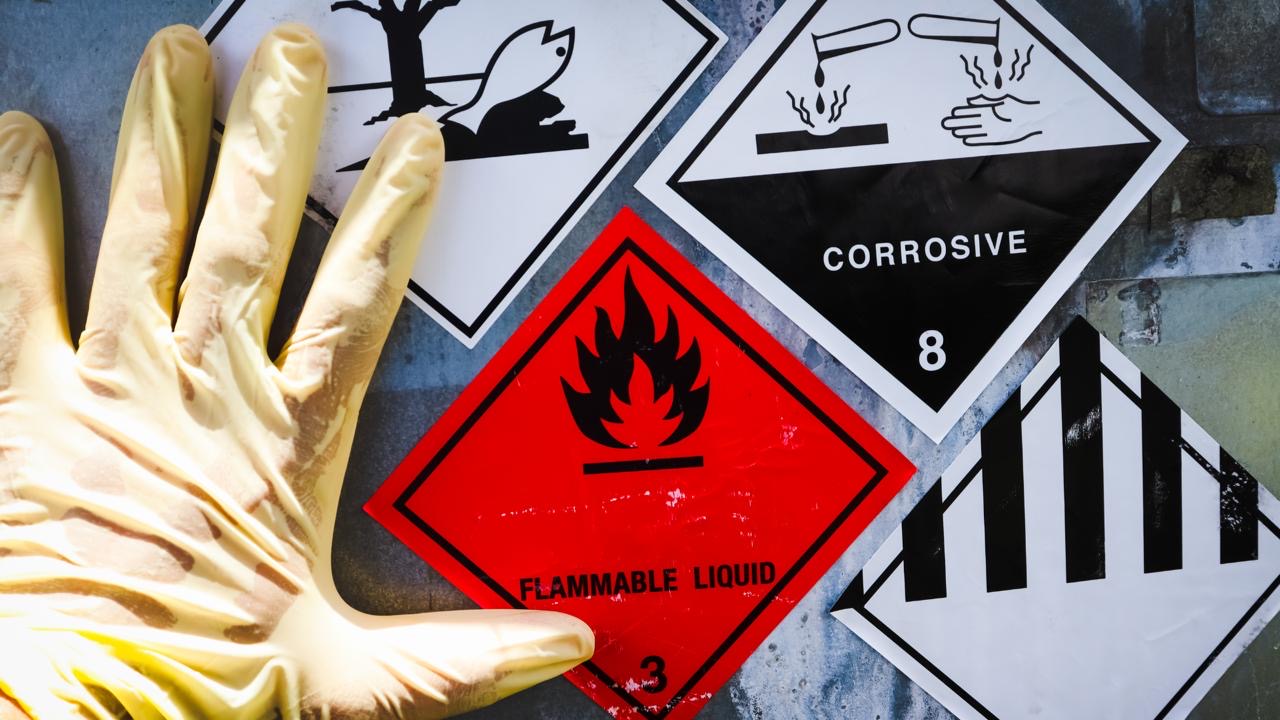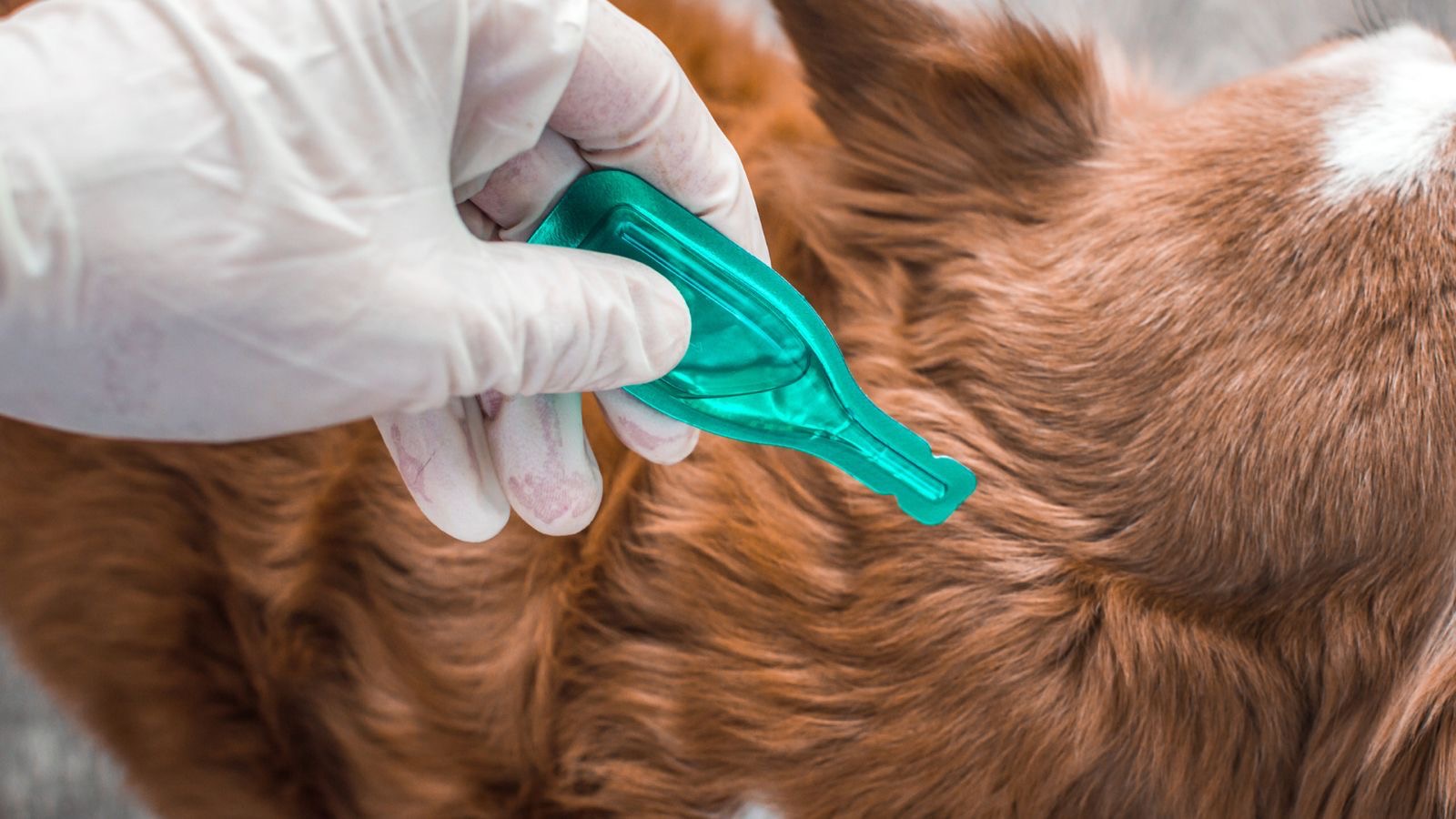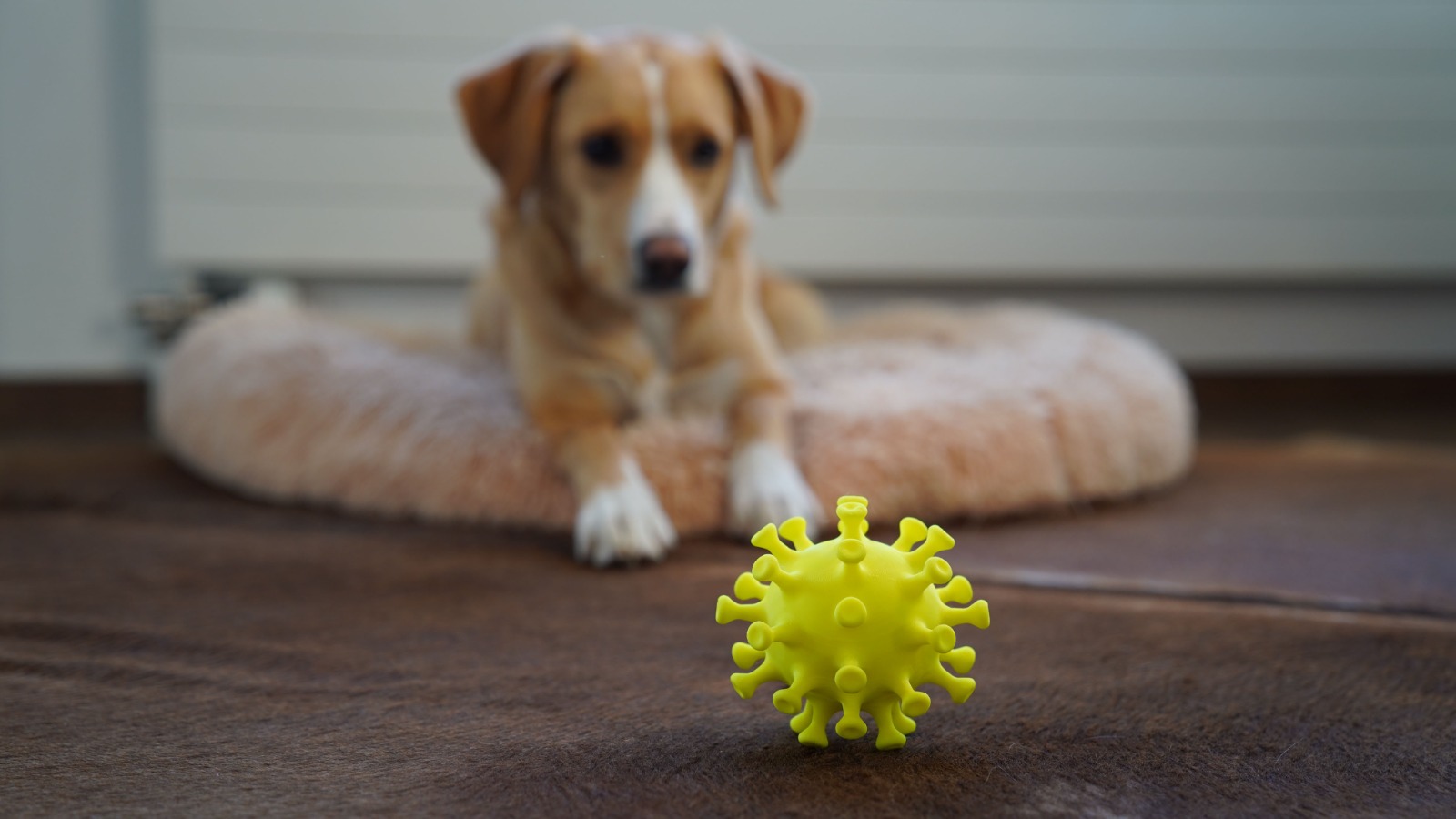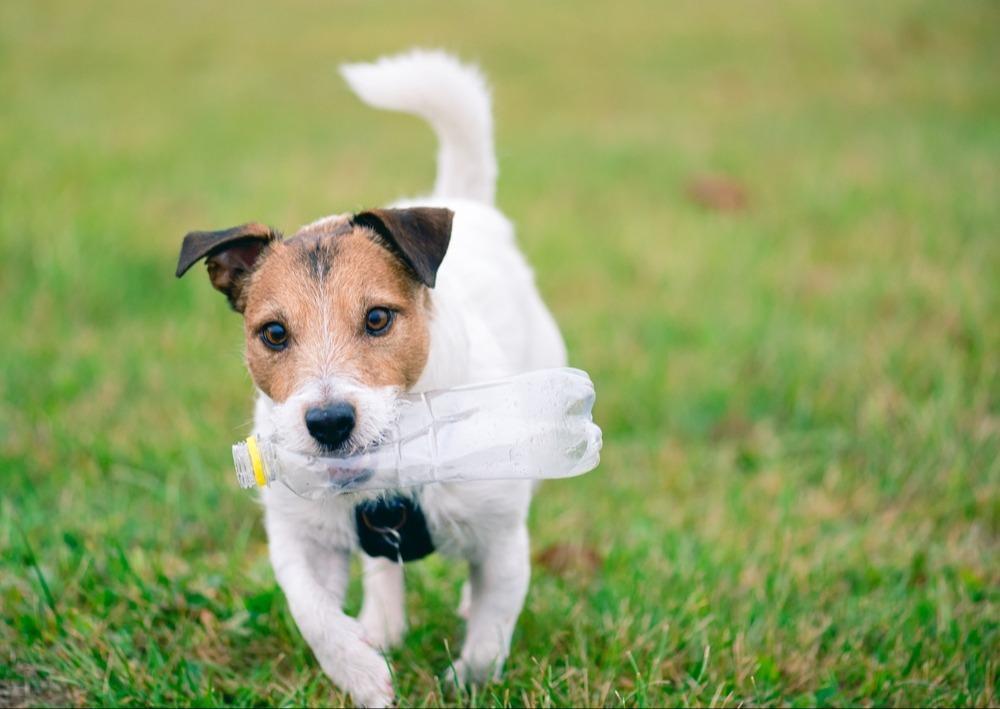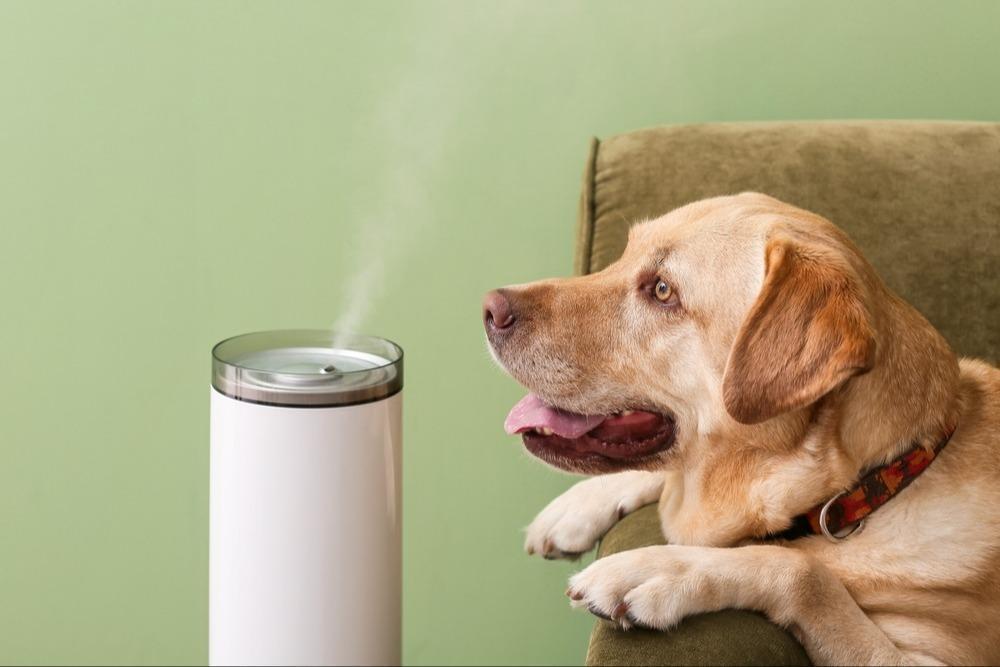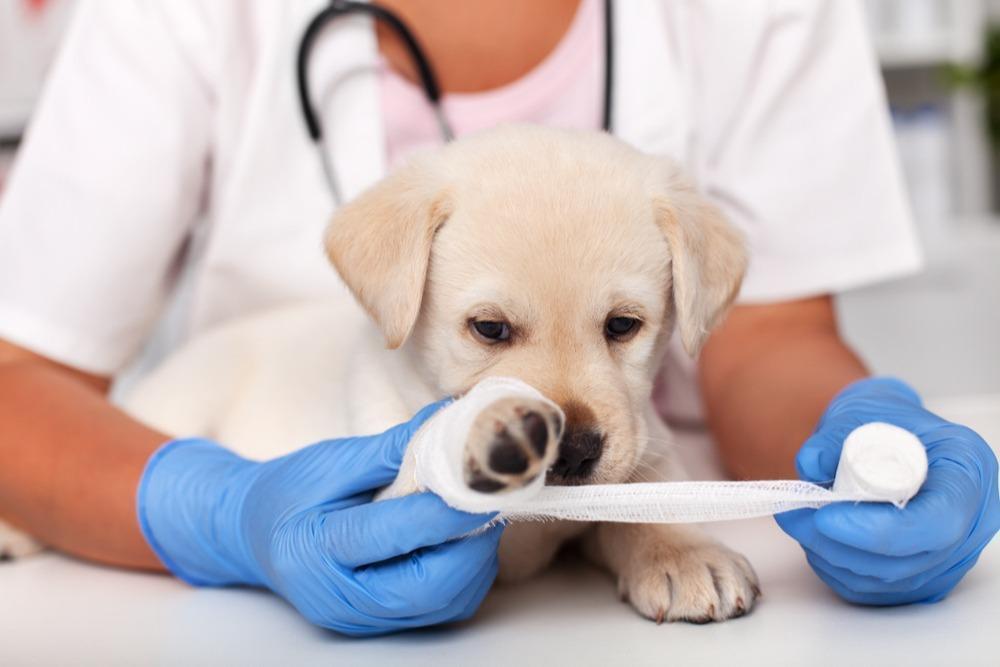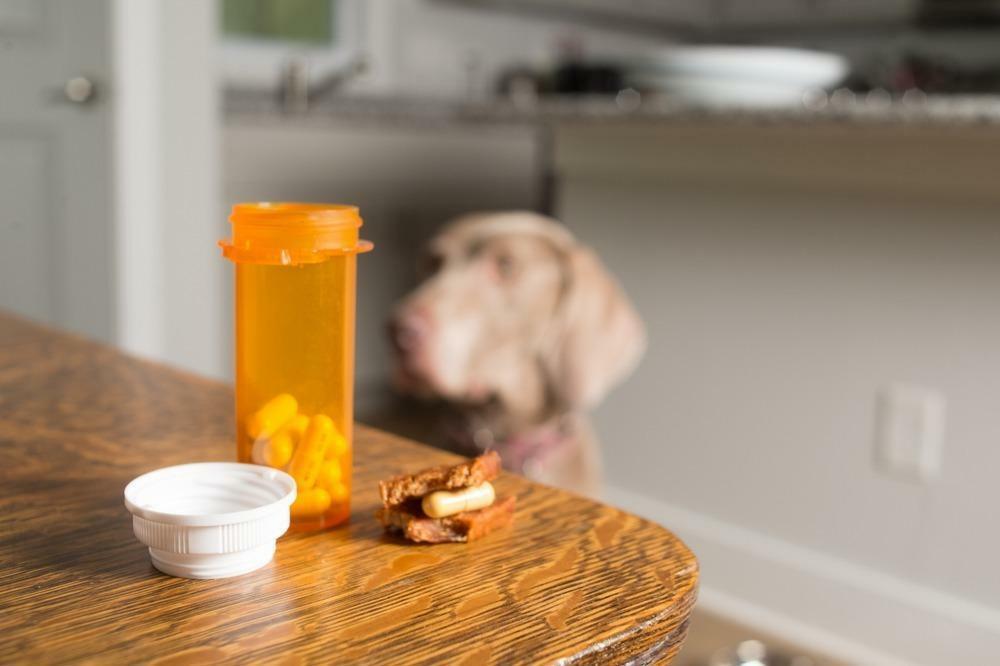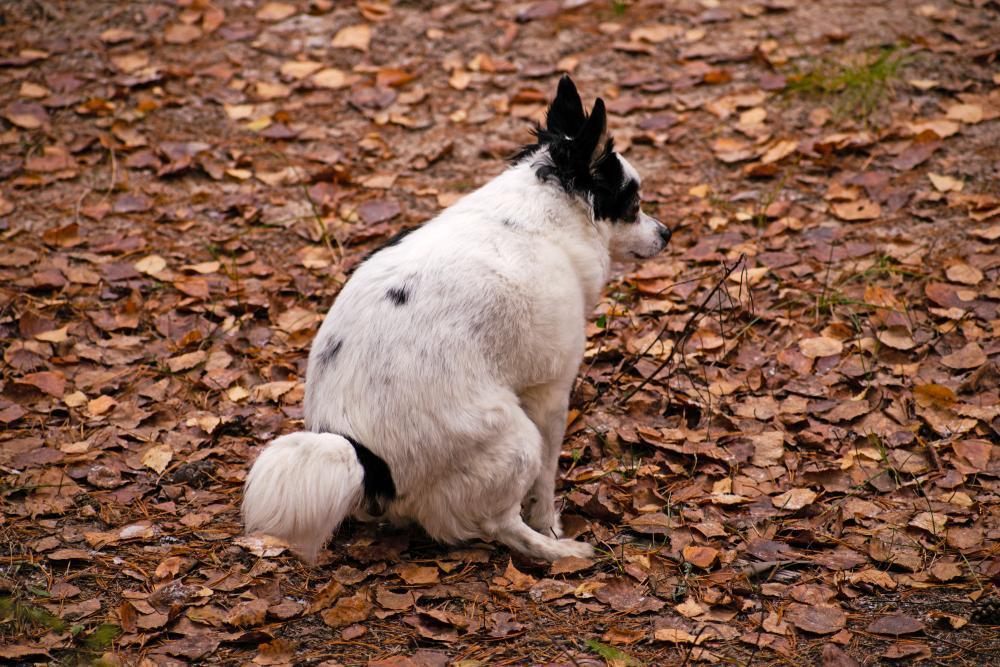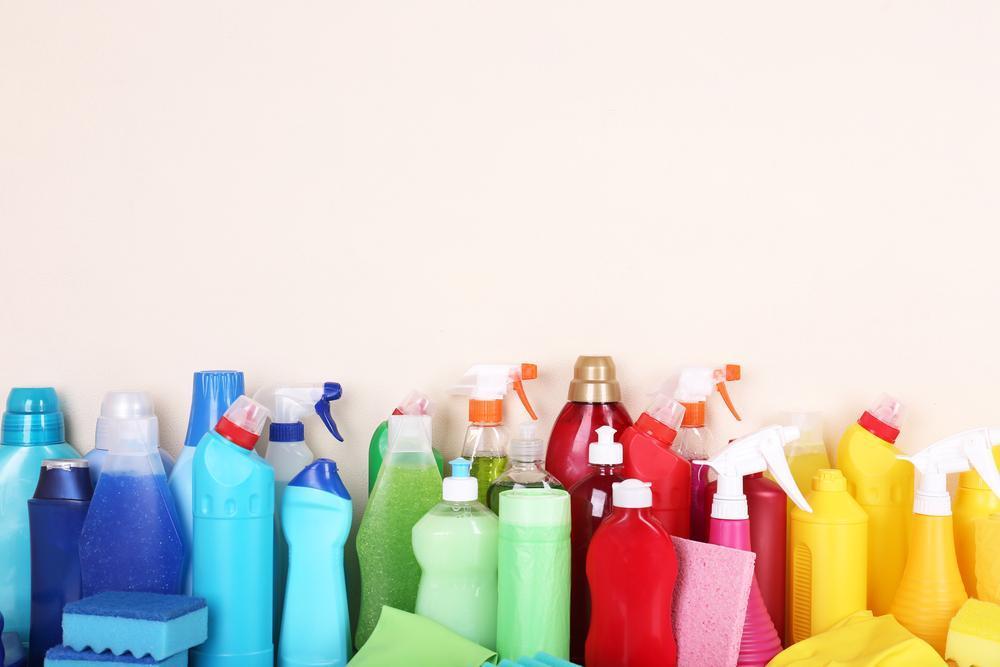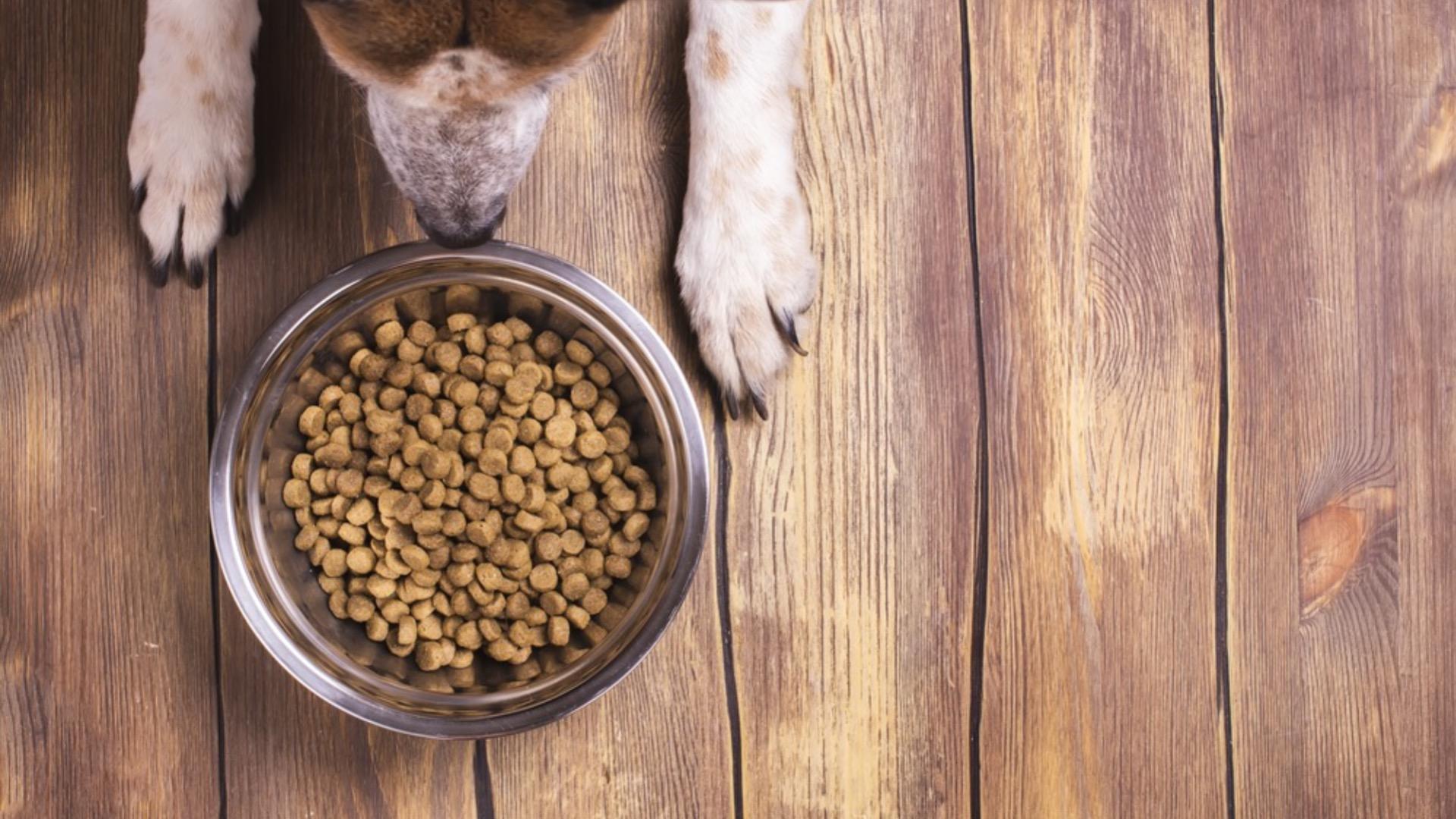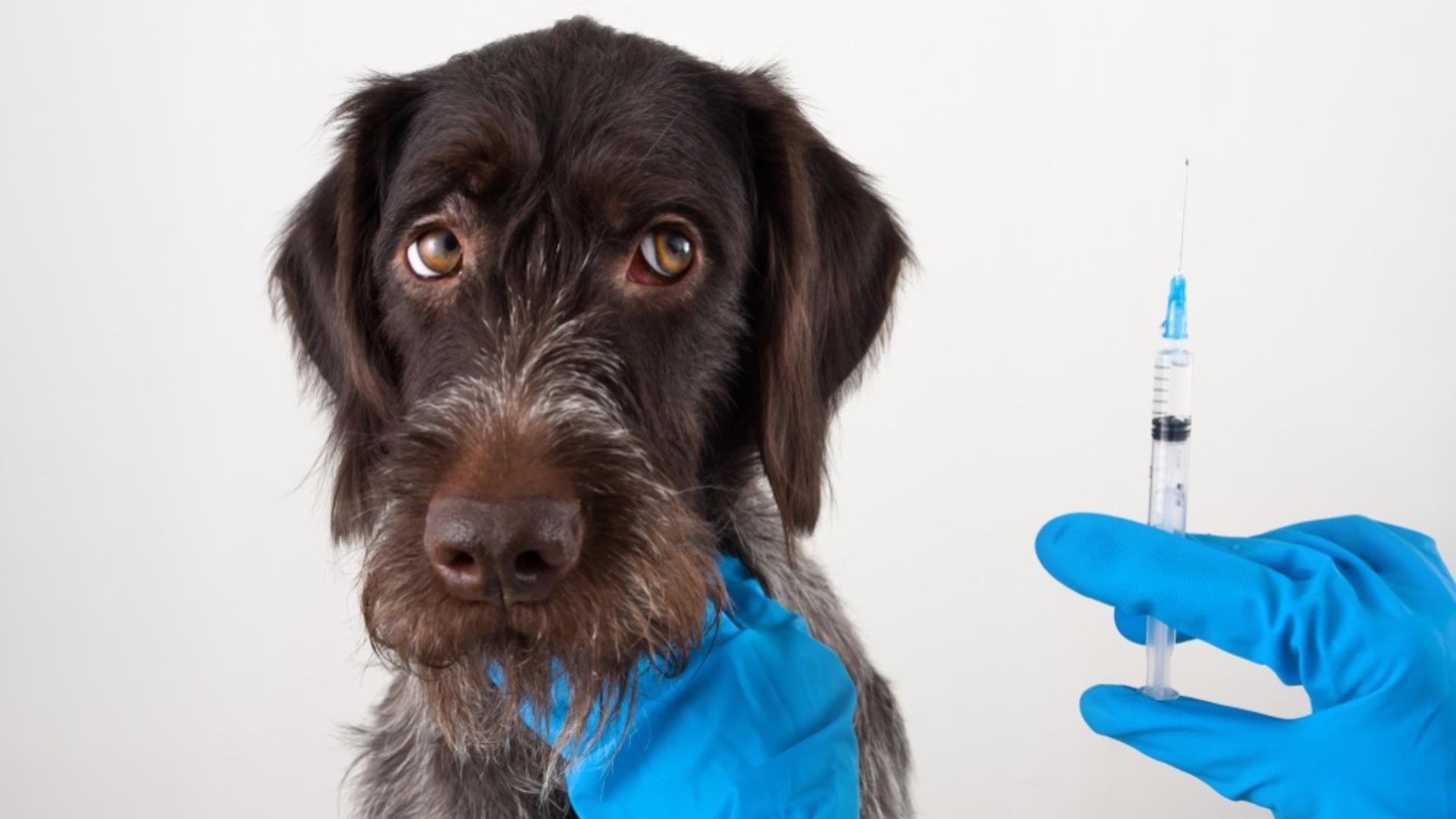In our previous blog post, we wrote about exposure to environmental hazards in the home, garden, and local parks. Environmental hazards are around us the vast majority of the time, and not only in the home, garden, or on local open green spaces, but at beaches, around lakes, and in woodland areas too. How can we keep our pets safe from these environmental hazards? Read on in this blog post to find out what the potential hazards are, and how we can keep our furry family members safe!
Around Lakes, Ponds and Streams
Starting with water bodies – whether your pet is exposed to lakes, ponds or streams, there is potential for exposure to hazards!
Blue-Green Algae
More and more pet owners are becoming aware of blue-green algae blooms; but why should we avoid them? How do they form?
Blue-green algae, also often referred to as Cyanobacteria, is a type of gram-negative bacteria, which presents much like an algae, which is why it’d informally known as blue-green algae. It forms in blooms, much like algal blooms, in lakes and ponds – usually still bodies of water.
Conditions for the bacteria to thrive will differ from water body to water body, which is why it’s not present in every lake or pond you may come across. Contributing factors to it’s growth include water clarity, temperature, availability of sunlight, and availability of sufficient nutrients for bacterial growth. Typically, blue-green algae is seen between the months of May and September, as these months are when the conditions are generally suitable for bacterial growth.
When walking near still bodies of water, you should look out for a discolouration to the water itself – the colour can range anywhere from neon green, to pea green, to blueish green, to a rusty reddish brown colour (not to be confused with the rusty coloured streams often seen in parts of the UK, which are caused by iron contamination, and a different type of bacteria), and the smell given off is quite unique; it often smells like pungent rotting food; certainly not a pleasant smell!
Blooms of blue-green algae can be highly toxic to both humans and animals, due to toxins found in the bacteria. There is a variety of possible health problems that can come from blue-algae poisoning, ranging from mild to severe, such as:
- Rashes on the skin
- Nausea and vomiting
- Downward dog position (denoting abdominal pain)
- Diarrhoea
- High temperature
- Liver damage
- Kidney damage
- Neurological damage
How do we avoid the risks associated with blue-green algae? When you are walking near still bodies of water, particularly in the aforementioned months, it is wise to keep your dog on a lead, at least until you have fully checked the water for contamination, or discolouration. If you suspect there is a bloom in the area you;re walking in, ensure your pet (and any human children!) keeps well away from it. Do not let them drink from the water body, nor swim in it. Some councils do put up signage in places where there are frequent blooms of cyanobacteria, but it is important not to rely on these! There is an application for mobile phones called “Bloomin’ Algae”, which is well worth downloading, as it shows reports of algal blooms.
Sewerage Leaks and Other Contaminants
Another risk of lakes and other water bodies, is sadly, and rather disgustingly, sewerage leaks and chemical contamination. It happens more than we care to imagine, and is pretty self explanatory. When sewers leak in to streams, toxic waste is transported down stream, and into any larger water bodies the stream leads to. With regard to chemical contamination, every now and then, you may hear of such an event on your local news, whereby a company or individual has disposed of toxic waste into a stream, whether by accident or on purpose.
Depending on the spillage and type of contaminant, a host of health risks are present, from skin rashes, to vomiting and diarrhoea, to potential poisoning and internal organ damage.
How can we avoid these areas? It can be tricky to tell if the stream you may be walking near has been contaminated, so it’s wise to keep an eye and ear open on local news channels, in newspapers, and on local community social media groups. Some water companies will map out sewerage and other contamination points, and their potential direction of travel, and display this on their websites and/or social media. Some may also offer an alert system for local residents to sign up to – this is worth investigating and signing up to any facilities for your area. Avoid walking in or near these places.
Water Intoxication
An example of an often overlooked environmental hazard your dog could be exposed to is water toxicity. Now, unlike the other hazards around lakes, ponds and streams, water toxicity doesn’t involve any contamination, and can happen even in the cleanest of water bodies!
So what is water intoxication, if there is nothing toxic in the water? When a dog consumes too much water in a short amount of time, it can lead to water intoxication, scientifically known as hyponatremia. During play time in lakes and ponds, dogs can take in a huge amount of water, especially when retrieving items. When a dog takes in too much water in a short amount of time, the body loses sodium, which in turn causes cells to fill with water, and swell. Cells swelling throughout the body, but especially in the brain, can be fatal.
Symptoms of water intoxication include:
- Vomiting
- Difficulty breathing
- Lethargy
- Glazed eyes
- Lack of coordination
- Excessive salivation
- Seizure activity
- Bloating
- Loss of consciousness
What can we do to avoid water intoxication? It may seem pretty self explanatory, but in order to reduce the risk of water being ingested too fast, we must be careful with how we interact with our dogs when they are enjoying the use of ponds and lakes. Try to avoid throwing items for them to catch or retrieve – save that for on land! Limiting time in the body of water can help too – even taking breaks between short bouts of water play sessions can help reduce the risk!
In the Woods
The woodlands are such fun places to walk, with your dog in tow. They’re full of new smells, so are a great mental workout for your dog! They do come with the potential for danger after exposure to hazards, both major health concerns, and injuries.
Pollen
Just like us humans, our pets can have pollen allergies, AKA hayfever! Environmental allergies can affect skin and breathing, cause runny eyes and noses, and general discomfort. Throughout the spring and summer months, your pet may get better or worse, as the pollen type shifts between tree, plant and grass. Much like us, different individuals suffering with pollen allergies will react differently to each type of pollen.
Can we avoid exposure to pollen? Sadly not; it is airborne after all. Those living in very urban areas with little to no greenery may naturally be in a better position than those in greener areas. Those who do live in areas with a lot of trees, shrubs and grasses may need to wear dog boots, and be wiped down after walks. You can use Leucillin or similar products for this.
Some may suffer very badly with hayfever, to the extent that the react, even inside the house. In these instances, you may wish to invest in an air purifying machine to help keep the air clean.
Quercetin is a natural plant with great antihistamine properties, so may be worth looking at, supplement wise, for your dog. You can also purchase thin cotton four-legged shirts for dogs, which can help protect the skin from pollens.
Sharp Objects
How many times have you been walking through a wooded area, only to come across lots of sticks pointing up from the ground? Most of us have come across these at one point or another! These are very hazardous to our pets, who may be too busy enjoying the great outdoors, to see the hazardous sharp sticks! Dogs have been known to impale parts of their body by running into such sharp objects when walking in wooded areas.
How do we avoid these objects? This can be easier said than done if your pets are not restrained, so its very important to be hypervigilant, and recall your pet in plenty of time.
Adders and Other Snakes
Adders are Britain’s only venomous snake. Readers from other countries should check their local native wildlife to check which species are venomous, and act accordingly. Adders tend to bask in the warm weather in summer months, and can often be found out in the open, whether they’re in the middle of the path, or deeper into the wooded areas. They can be quite skittish, so often slither away when approached, however they may also attack if they feel under threat. If your dog is likely to ‘investigate’ the snake, or try to pick it up, it is very important to be vigilant, and recall your dog immediately.
If your dog is bitten, it is extremely important to get to a veterinarian immediately. Try to prevent the dog moving too much to reduce the speed at which the venom spreads through the body. Call ahead to local vets to check they carry the anti-venom, as not all do! You may wish to calla round prior to the warm weather, and keep a list with you, of local vets who offer it.
Symptoms of an adder bite include:
- Swelling of the area bitten
- Bruising of bite site
- Pale gums
- Nausea and vomiting
- Excessive drooling
- Lethargy
- Loss of coordination
How can we avoid snake bites? Simply keep your dog on lead in areas at high risk of adder presence when walking in these areas in summer months. Particular caution should be taken on warmer days. Look and listen – look for snakes in the distance (they can camouflage with the woodland floor quite well, so take a very good look ahead!), and listen for the sound of a snake travelling in the undergrowth.
Insect Bites
Another environmental hazard you’re likely to come across in woodland areas, is insects. Probably the most common insect your pet may get bitten by, is the tick, which you can read more about
here.
Mosquitoes, bees and wasps may come into contact with your pet too, but far less likely than ticks.
Tips to avoid insect bites include using multiple layers of natural prevention, like natural insect repelling sprays and collars, electromagnetic collars, and amber collars. Try to avoid walking near areas of stagnant water, especially during the warmer months of the year. Check your pet over twice daily, and remove any hitchhikers! If your dog or cat becomes itchy or produces a rash following their encounter with insects, you can use Leucillin, or similar, to help soothe the area. In some cases you may need to shave the fur in the affected area to be able to treat it properly.
Fungi
While some mushrooms are extremely beneficial for your dogs, some species of fungi found in the environment can be highly toxic! Our precious cats and dogs are scavengers by nature, so are often curious about things surrounding them; curious enough to need to give them a sniff or a taste. Nibbling on some species of mushrooms may cause some serious health troubles, though!
While fungi can grow in many terrains, it is most often seen in wooded areas. It loves warm, moist climates, but can grow in cooler moist areas too. Unless you are very experienced in mushroom identification, it is very difficult to tell whether the ones present are toxic or not.
There is a wide range of symptoms of mushroom poisoning, ranging from mild to severe, including:
- Nausea and vomiting
- Diarrhoea
- Bradycardia (lowered heart rate)
- Difficulties breathing
- Liver failure
- Kidney failure
- Neurological changes (including tremors, loss of coordination, seizures)
Veterinary treatment is required in the vast majority of cases, and sadly many still die.
What can we do to reduce the risk of mushroom toxicity? As with many dangers in woodland areas, avoiding mushrooms can be tricky, especially for cats who roam free! Regarding dogs, if you are in an area with a lot of mushroom growth, it’s wise to keep your dog on a lead. If your dog is a scavenger, muzzle training can be incredibly beneficial too!
Alabama Rot
The last major environmental hazard your pet may be exposed to in the woodlands, is a fairly recently discovered disease, called Alabama Rot. Very little is currently known about this disease, but it in the cases of contraction so far, the fatality rate is very high.
The clinical name for Alabama Rot is Cutaneous and Renal Glomerular Vasculopathy (CRGV), and presents with skin lesions in the very early stages, as it damages the blood vessels and skin cells, before moving on to the kidneys, ultimately causing severe kidney failure. Symptoms of Alabama Rot include:
- Vomiting
- Lesions and redness on the undercarriage and/or feet
- Lethargy
- Loss of appetite
- Excessive paw chewing/licking
- Swelling of the skin
The cause of this disease is not clear, and the path of transmission is unknown by specialists who are the research leaders into Alabama Rot, Anderson Moores Veterinary Hospital. It is very apparent however, that dogs contracting this disease seem to be most at risk in muddy woodland areas, and during the spring and summer months. This environmental hazard is hazardous to all breeds, but so far, the most commonly affected appears to be spaniel types, labradors, and Hungarian Vizslas.
How can we reduce exposure to Alabama Rot? We, as pet owners, are unable to tell where this disease may be prevalent, unless there are previous reports of it in the local area, and therefore cannot actively avoid it very easily. When you are walking in muddy areas, it is incredibly important to clean your dog’s feet and undercarriage as soon as you finish every walk. A shallow bath, followed by Leucillin or similar can keep your dog free from potential skin contamination.
You can keep an eye on the
map of confirmed cases here!
At the Beach
Who doesn’t love a beach holiday with the dog?! Most dogs will go crazy for a trip to their favourite sandy beach! These trips are super fun, but do come with many risks, which we as pet guardians need to be aware of to keep our dogs safe.
Salt Water Intoxication
We won’t go too much into detail with this one, as we have already covered water intoxication earlier in this blog post. Just like in lakes and ponds, dogs playing in the sea will often ingest a lot of seawater.
Drinking high amounts of sea water can be even more dangerous than water in lakes and ponds, due to it’s salinity (amount of salt). Consuming too much salt can play havoc on the body, as water is drawn from blood cells, into the intestines, leaving the dog dehydrated, and often with vomiting and diarrhoea. The general fluid balance within your dog’s body will be disrupted too! It is extremely important to seek veterinary attention should your dog fall sick after playing in the sea.
What can we do to counteract the salinity? If your dog is a keen swimmer, and loves to play in the sea, drink the sea, or in some cases, even just sit in the sea, then it is imperative you give the dog frequent water breaks, with fresh water. Limit their time playing in the sea, and reduce that time even further if there are a lot of waves!
Eating Sand
This one happens way more often than you may think! Many dogs end up eating the sand they’re walking on or playing with! Whether intentional, or not, eating too much sand can lead to intestinal blockages, as it is indigestible. Signs your dog has consumed too much sand include:
- Nausea and vomiting
- Severe constipation
- Diarrhoea
- Downward dog pose (denoting abdominal pain)
- Bloating of the abdomen
Can we stop sand consumption? Well, not really! Dogs often accidentally swallow sand when digging or playing with their sand covered toys! If your dog enjoys a beach walk without digging or playing with toys, they will be at lower risk of eating too much sand. Those who do enjoy digging and toys, be vigilant, and try to wipe toys periodically. Offer plenty of water breaks too!
Palm Oil Wash Up
When you go to the beach, you may often come across lumps of solid white material. These are lumps of palm oil, that have been washed up on to the beach, from the sea where they float to the shore. Palm oil itself is not toxic; it’s not something we would actively encourage to feed, but a little shouldn’t cause harm. So why is it an environmental hazard at the beach?
The washed up palm oil often found on beaches is usually laden with toxins; more specifically, toxic bacteria. The bacteria harvested by the palm oil before being washed up can be deadly if ingested – and death can be quite fast too! Consuming large lumps of palm oil can also cause the following symptoms:
- Nausea and vomiting
- Diarrhoea
- Dehydration
- Intestinal blockages
- Pancreatitis
How can we avoid palm oil consumption? Keep an eye on local reports, and avoid any areas reported to have a high mount of washed up palm oil on the shore. You may need to consider muzzle training your dog if they’re a scavenger too, or keeping them on a lead around areas with palm oil present.
Washed Up Wildlife
The main concerns regarding deceased or washed up wildlife at the beach, are jellyfish and fish. Jellyfish can be extremely tricky to see, and some species are extremely dangerous to life; thankfully the more dangerous types of jellyfish such as Box jellies are not usually found in the UK.
When stood on, the tentacles of a jelly fish can give a strong sting, which will be extremely painful, and can lead to swelling of the area, and joints in the area of impact. These incidents will require veterinary attention.
Dead fish are commonly seen washed up on the shore too, and often carry a host of toxic bacteria and parasites, which can cause your dog to become unwell if eaten.
What can we do to reduce the health risks involved here? Be vigilant. Keep looking as far ahead as you can, and up close too! If you spot any washed up fish, or anything that resembles a plastic bag near the shoreline, keep your dog on a lead, and well away from them!
Temperature Spikes
Beaches can be hot places to be, especially in summer months! The sand underfoot can become extremely hot, and the sun’s reflections off the sand and sea can intensify the heat, causing sunburn. The temperatures are often masked by a sneaky cooler breeze coming inland, which can make the heat even more dangerous!
Dogs often love to run around on the sand, which causes further body temperature raises, on top of naturally occurring raises to body temperature in response to the environment/weather. Heat stroke is a great risk in this situation, and is not something to be taken lightly! Heat stroke can kill dogs. You can read lots more about keeping dogs safe in the summer in our
blog here.
Symptoms of heatstroke include:
- Excessive panting
- Noisy breathing
- Glazed over eyes
- Restlessness
- Drooling
- Red gums
- Nausea and vomiting
- Diarrhoea
- Rapid heart rate
- Seizures
- Collapse
A few tips to reduce the risk of hazardous exposure to heat. Those with paler coloured or very short haired dogs should take extra care at the beach, and administer some dog suncream, to ensure the skin is protected from the sun. A cooling coat can be provided on warm days, and frequent water breaks with fresh water are essential for all. Some may also find paw protection in dog boots a necessity when at the beach as well!
Seaweed
Different types of seaweed are often found at the beach, washed up on the shore. The dog world sees numerous products on the market which are seaweed based, boasting some amazing health benefits! So why can seaweed at the beach be a possible environmental hazard your dog could be exposed to?
Fresh seaweed can expand when ingested, depending on the species of seaweed in question, which can cause intestinal blockages. Seaweed stalks are particularly well known to cause blockages, and veterinary attention could be needed!
Should I stop my dog eating it? Yes – ideally we should stop our dogs from consuming seaweed washed up on the beaches! If your dog is on any seaweed based supplements, it is especially important that they do not consume additional seaweed at the beach, because seaweed is high in iodine, which can cause thyroid problems if too much is consumed, which you can read about
here.
Deceased Wildlife
Finally, it is important at all of the above locations, to watch out for alive, and dead wildlife. If you’ve a scavenger, you’ll know just how appealing roadkill and other deceased wildlife is for your pet.
Bioaccumulation in Prey
Many dogs and cats, at a variety of locations, often enjoy collecting deceased wildlife, and ‘kindly’ gifting it to you! What a gift!
While raw meat is of course, the most natural, unadulterated form of feeding your carnivorous pets, deceased wildlife isn’t the best option. Not only can deceased wildlife contain parasitic burdens and be potential hosts for disease, but we also need to take into consideration something called ‘bioaccumulation’ of poisons.
Pest control poisons, often targeted at rodents, can end up in other deceased wildlife too – especially those who are carnivores. When the predator consumes the deceased prey which has been killed by a poison, the predator then consumes the poison secondarily. If they are not at the top of the feeding chain, they may become prey themselves, passing the possible effects of poison on to the predator. Your dog could pick up an affected animal, and consume the poison. Similarly, cats who enjoy displaying natural behaviours of catching and killing mice and other rodents, may be at risk of indirect poisoning.
Is there a way to avoid bioaccumulation? Unfortunately, especially with cats, it is very tricky to avoid. Teaching dogs the ‘leave it’ command is essential for situations like this! Try to remove any deceased wildlife from your property, especially if your cat has kindly left it for you!
Try to be hypervigilant when walking your dog too.
We hope this blog has been both eye opening and helpful for you, and you may take a new approach into keeping your pets healthy from the outside inwards! If you feel you could make some changes to your dog’s diet or lifestyle, please do book a consultation with one of our team!
Team MPN x





